Statue Controversies: Dred Scott v. Sanford, Chief Justice Taney and Gandhi
Andrew Majeske
Issues/Topics Covered in this Chapter
- Statute controversies ignite debates over the representation and commemoration of historical figures, revealing tensions between preserving heritage and acknowledging problematic legacies.
- Critical reflections on historical narratives prompt society to reevaluate the significance of commemorating certain figures, challenging conventional perceptions, and fostering dialogue about collective memory.
- Public memory becomes a battleground as communities grapple with the complexities of honoring historical figures amidst evolving societal values and interpretations of the past.
The historic Supreme Court decision in Dred Scott v. Sanford, delivered by Chief Justice Taney in 1857, denied citizenship to African Americans and reinforced the institution of slavery. Taney’s role in this decision and his subsequent legacy directly relate to contemporary issues surrounding controversial statues. Despite his assertion that all black people, whether enslaved or free, could never become citizens of the United States, Taney’s statue was eventually placed in Congress following a heated debate in January 1865. The debate over honoring Taney reflects broader discussions about commemorating historical figures associated with oppression and injustice.
The recent removal of Taney’s statue from Congress following George Floyd’s murder, and its replacement with a statue of Thurgood Marshall, along with the events surrounding the “Unite the Right” rally in Charlottesville in 2017, highlight the ongoing struggle with symbols of oppression and injustice. These events have sparked intense debates over the presence and significance of public statues, exposing deep-seated tensions and prompting critical reflections on historical narratives and public memory.
In the small town of Davis, California, a local controversy emerged surrounding a statue of Mahatma Gandhi. The protests began when the Indian government gifted and unveiled the statue in 2016. This sparked a debate about Gandhi’s legacy and representation. The situation also sheds light on Indian Prime Minister Narendra Modi’s efforts to install Gandhi statues around the world, highlighting the complexities of commemorating historical figures and the global nature of historical narratives.
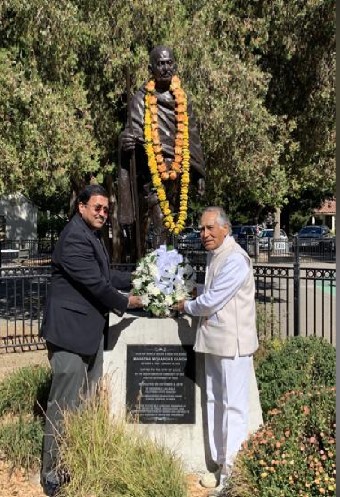
The protests were driven by diverse grievances articulated by various groups within the community. The Sikh student organization at the local university protested Gandhi’s actions towards Sikhs and their religion, particularly his efforts to reabsorb Sikhism into Hinduism following Indian independence. Other protesters accused Gandhi of racism, citing racially charged statements made during his time in South Africa and his attempts to marginalize the Dalits in the new Indian state. Additionally, criticisms of Gandhi’s treatment of women, including his controversial practices of testing his virtue through chaste sleeping arrangements with naked women, including his teenage niece, emerged as another point of contention.
These multifaceted grievances were visibly reflected in the protest signs wielded by demonstrators at the statue’s dedication.
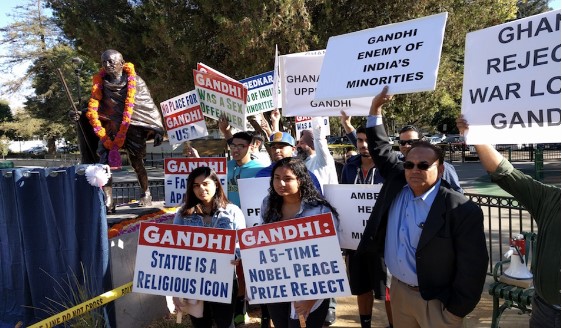
The tensions surrounding the Gandhi statue reached a peak in June of 2020, after George Floyd’s murder when vandals defaced it with red paint, scrawling expletives, and accusations of rape across its surface. This act of vandalism highlighted the strong emotions and divisions surrounding the statue’s presence in the town.
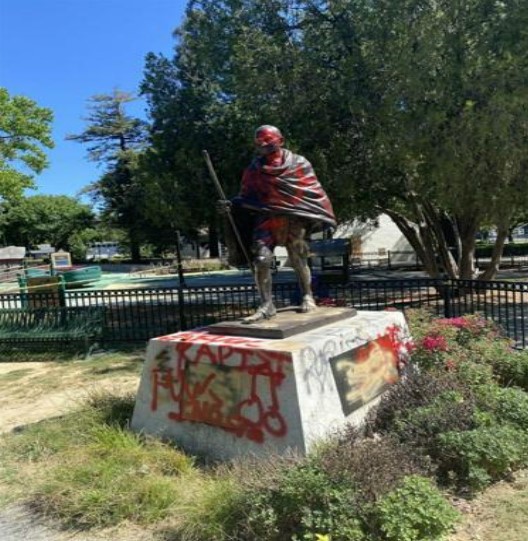
Just six months later, in January 2021, vandals struck again, this time toppling the statue by sawing it off at the ankles and beheading it under the cover of night.
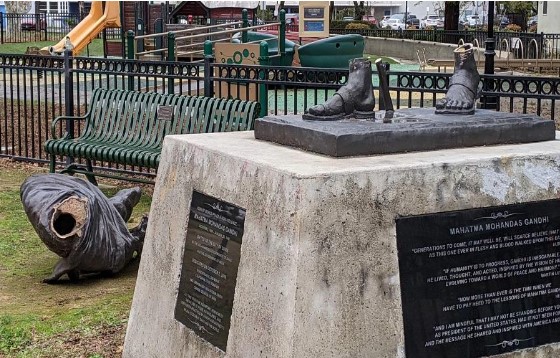
The town authorities swiftly responded by relocating the toppled statue to storage and erecting a fenced-off plywood enclosure to conceal the base from public view.
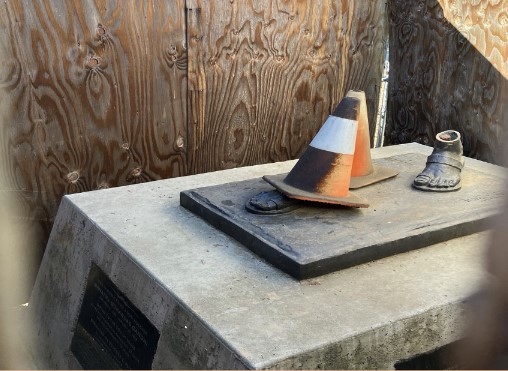
The interconnected stories of the Dred Scott decision, a Chief Justice Taney statue in Congress, and the contemporary controversy over a Mahatma Gandhi statue in a small California town, all highlight the fraught nature of memorializing historical figures with complicated legacies. Though such controversies reflect the pain and injustice inflicted on a marginalized group, and though they may lead to vandalism, they are nevertheless an integral part of a larger dialogue about how to navigate public memory.
Review Questions
- How do statute controversies influence our understanding of history and shape the public’s perception of historical figures?
- In what ways can critical reflections on historical narratives enhance our ability to commemorate historical figures authentically and responsibly?
- What role does public memory play in shaping societal attitudes towards controversial historical figures, and how can college students actively engage in shaping public discourse on these issues?
Students are invited to engage with these complex issues through these related video production assignments:
Public Statue Controversies: Modeling a Video Recording
Group Video Assignment: Citizen, Rights, Expression: Dred Scott V. Sanford
About the author: Andrew Majeske is a professor in the English department at John Jay College of Criminal Justice.
